Gallery Network
Spotlight: ‘Artist-Alchemist’ Gilles Lorin’s Experiments in the Darkroom Bring Antique Photographic Processes to Light
The photographer's mastery of developing and printing techniques allows for a broad range of artistic expression.
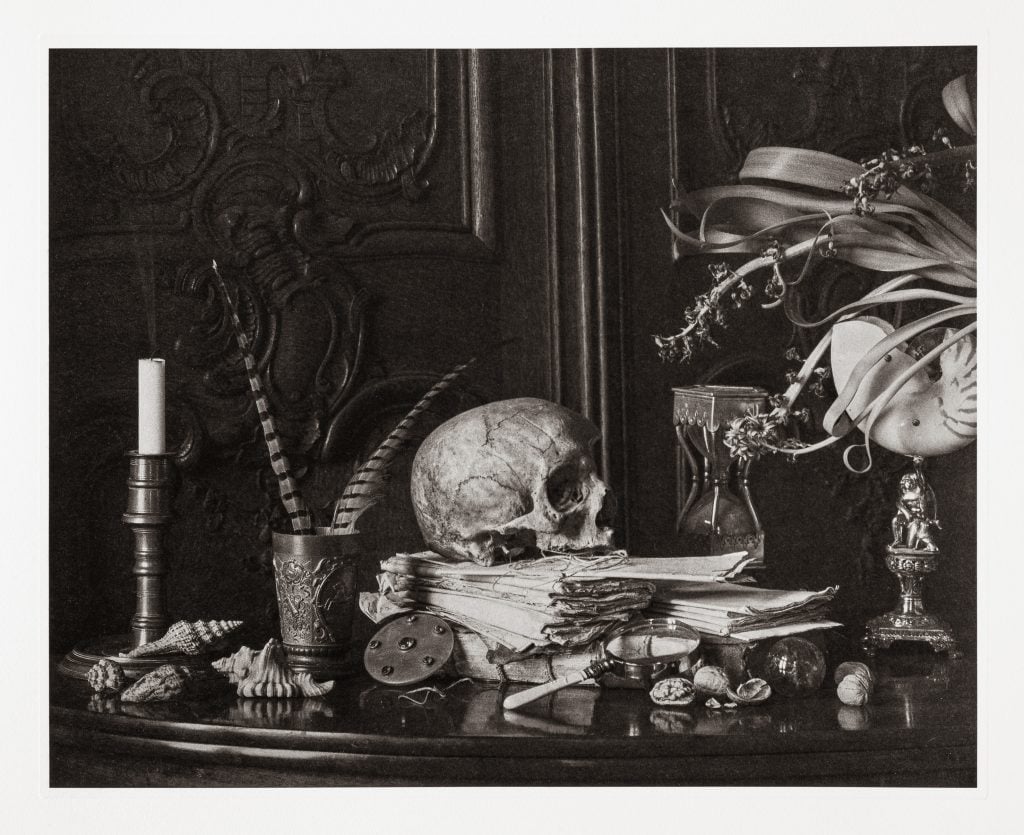
The photographer's mastery of developing and printing techniques allows for a broad range of artistic expression.

Artnet Gallery Network

Every month, hundreds of galleries add newly available works by thousands of artists to the Artnet Gallery Network—and every week, we shine a spotlight on one artist or exhibition you should know. Check out what we have in store, and inquire for more with one simple click.
About the Artist: Munich-based photographer Gilles Lorin (b. 1973) creates intensely atmospheric images that have a distinct aesthetic quality that could allow them to be mistaken for drawings or paintings. Lorin has developed a reputation for his employment of traditional and historic photographic processes, experimenting with various types of negatives, chemicals, papers, and techniques—an artistic practice that has led to him being referred to as an “artist-alchemist.” Currently, a selection of works emblematic of Lorin’s oeuvre are on view both online and in-person at Kunkel Fine Art, Munich. The juxtaposition of various stylistic periods of the artist’s recent career highlights the breadth of his visual and technical explorations.
Why We Like It: The influence of art history is palpable across in Lorin’s work. Vanité de l’Archiviste (2018) vividly recalls the vanitas painting tradition of the Dutch Golden Age, featuring hallmark symbols of memento mori, including a skull, hourglass, and recently snuffed candle still emitting a faint trail of smoke. The photo is a monochromatic platinum-palladium print on Japanese Gampi paper, allowing for an expanded range of mid-tone grays—which are not possible with more modern photographic processes like gelatin silver prints—that makes the photo at first glance appear almost like a lithograph. Other works exhibit Lorin’s exploration of color, like the two cyanotypes on view, Portrait d’Arbre, Prussian Blue Study No. 1 (2016) and Reaching to the Sky (2019). Created years apart, these works show how the artist learned to exploit cyanotypes’ technical and graphic qualities, resulting in increasingly exceptional examples of the watercolor-like, otherworldly images for which the medium is known.
According to the Gallery: “Lorin’s studies of art history and classical archaeology had a decisive influence on his strong interest in the history of civilizations and religions. As such, he worked for many years as an expert in Asian art. With his background and experience, it is hardly surprising that the most diverse philosophical approaches find their way into Lorin’s work and help him to fathom uniqueness, flawlessness, and perfection. Sometimes, motifs or stylistic influences from Asia predominate; other times a Christian or occidental symbolism prevails. Lorin finds a very personal view of the fragile beauty of our earth, which he reveals to us with his peaceful, aesthetic photographic art.”
See featured works by Gilles Lorin below.
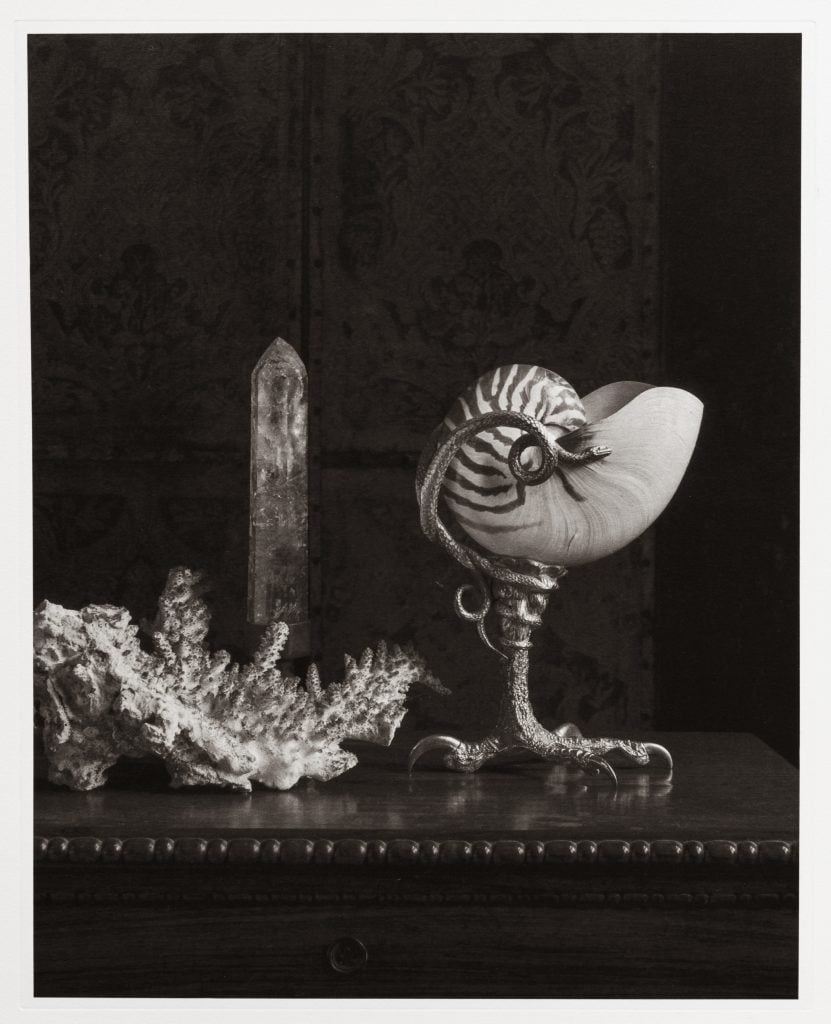
Gilles Lorin, Still Life with Nautilus, Study No. 2 (2018). Courtesy of Kunkel Fine Art, Munich.
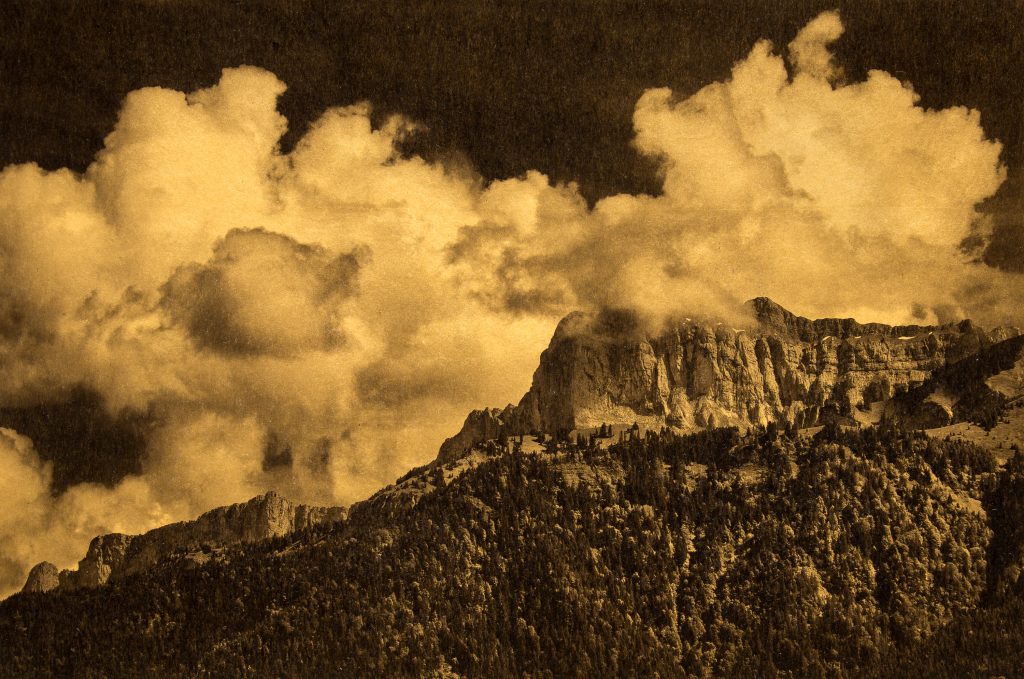
Gilles Lorin, Entre Ciel et Terre (2016). Courtesy of Kunkel Fine Art, Munich.
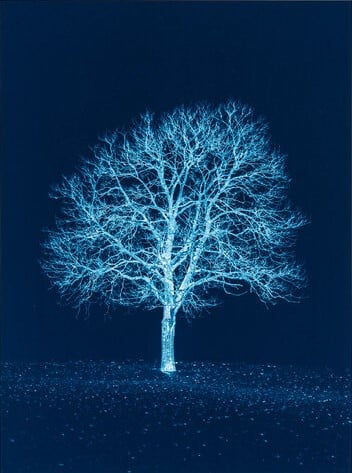
Gilles Lorin, Portrait d’Arbre, Prussian Blue Study No. 1 (2016). Courtesy of Kunkel Fine Art, Munich.
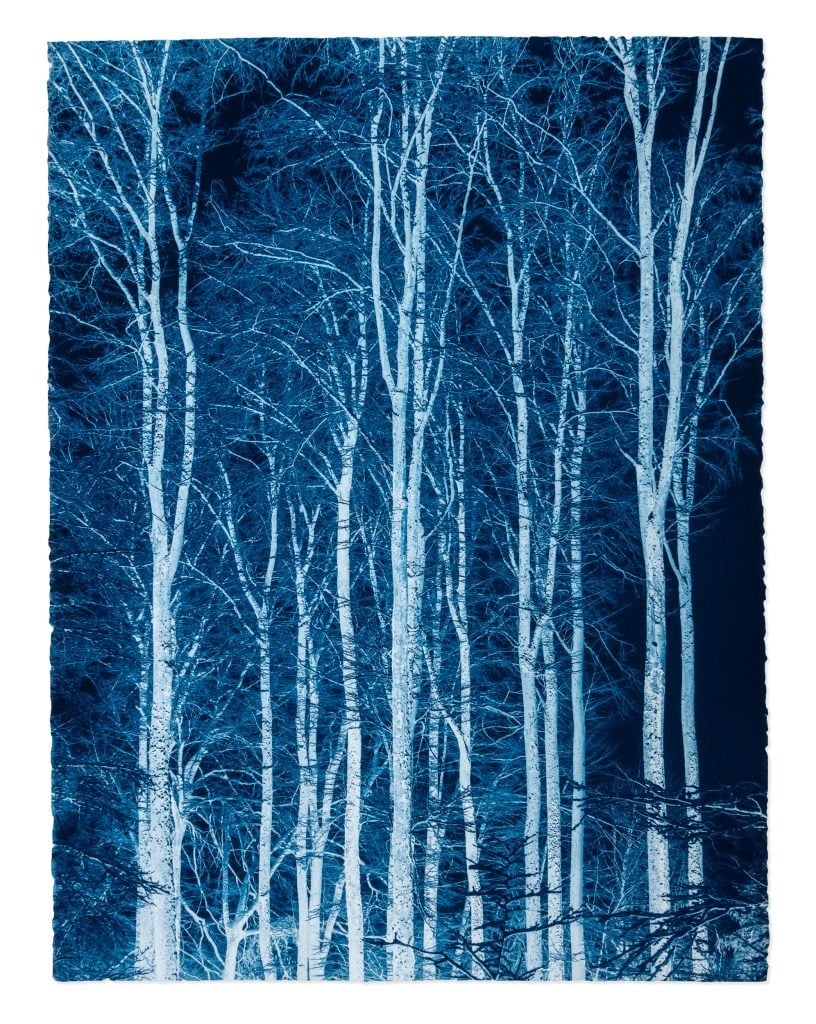
Gilles Lorin, Reaching to the Sky, Prussian Blue Study (2018). Courtesy of Kunkel Fine Art, Munich.
Gilles Lorin work is currently on view at Kunkel Fine Art, Munich.